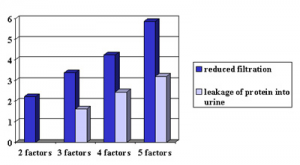The fear of gaining weight after quitting to smoke tends to be a fear among a number of smokers, but a study presented at the annual congress of the European Respiratory Society in Glasgow in 2004 may very well put these fears to rest.
Dr. Audrey Lynas, a respiratory specialist at Sunderland Royal Hospital reported a study on 622 patients with chronic obstructive pulmonary disease (a late effect of smoking). The body mass index was not different from those who continued to smoke than those who were ex-smokers. Both groups had a BMI of 26, and five years down the line, they still haven’t put on any weight, reported Dr. Lynas.
According to a 2002 survey in Britain, 30% of female smokers and 14% of male smokers said, that they would not try to quit, as they were afraid of gaining weight. Even patients with COPD (the previously mentioned chronic obstructive lung disease) may be influenced by this fear, even though it is crucial for them to quit in order to stop the progression of their lung disease.
It seems logical, that quitting the cigarette habit is not associated with weight gain. However, if nibbling becomes a substitute for smoking, frequent snacks lead to an overload of calories.
Weight gain will be the consequence of the additional munching. Stop smoking is not the culprit for weight gain.
More on weight loss here: http://nethealthbook.com/health-nutrition-and-fitness/weight-loss-and-diet/
Reference: The Medical Post October 5, 2004, page 7
Last edited Oct. 27, 2014















